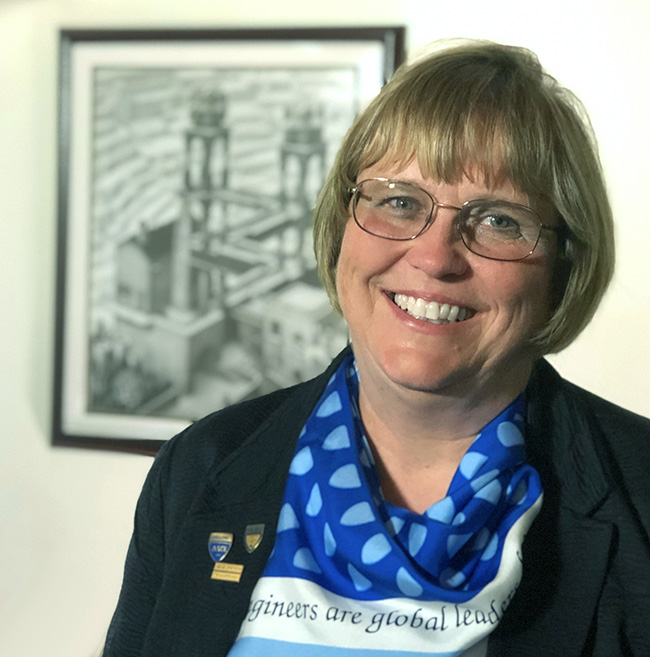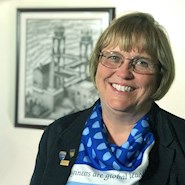By Maria C. Lehman, P.E., ENV SP, F.ASCE

As the ancient Native American proverb says, “We do not inherit the Earth from our ancestors. We borrow it from our grandchildren.”
It’s a quote that I believe people, especially civil engineers, should understand and integrate into daily life. We need to consider the current state of our planet and build a world that will last — one that centers on sustainability and resilience.
According to ASCE’s road map to sustainability, it begins with “doing the right project.” We must consider all possible alternatives before projects are conceived, executed, and operated. While doing the right project, we must also “do the project right.” We must develop new standards and protocols that are performance-based rather than prescriptive. Those standards must guarantee a system’s safety and its ability to recover from natural and man-made disruptions.
The need to build safe, sustainable, and resilient infrastructure is a priority not only for the profession but also for ASCE. It’s reflected in our vision and mission under our newly adopted strategic plan. It is also a fundamental principle in our Code of Ethics. Therefore, we’ve developed several resources and initiatives to promote these efforts.
ASCE/SEI 7-22 Minimum Design Loads and Associated Criteria for Buildings and Other Structures, is an essential tool supporting civil engineers’ commitment to protect the health, safety, and welfare of the public. Updated every six years, the 2022 edition of the standard includes the first-ever criteria for tornado-resistant design.
The new Peer-to-Peer Standards Exchange serves as a forum for members to dive into discussions about standards related to various disciplines and engage with top technology leaders. The ASCE Board of Direction also approved a five-point Industry Leaders Council plan to spotlight the Society as a trusted resource for technical guidance on mitigating climate change.
And we are not doing this alone.
ASCE formed the International Coalition for Sustainable Infrastructure, which includes a partnership with the Global Covenant of Mayors for Climate & Energy.
The Society has also established a great working relationship with the National Oceanic and Atmospheric Administration as well as its National Centers for Environmental Information. Recently, NOAA requested input on how the agency could provide more useful climate data and other information to help civil engineers design projects to be safer, more resilient, and more sustainable.
In February, we also hosted a Leadership Summit on Climate-Ready Infrastructure with the University of Maryland and NOAA.
As we build on these collective efforts, we must examine what we can do now to prepare for the future. Global challenges are on the horizon. The United Nations has highlighted 17 Sustainable Development Goals to achieve by 2030. Since we as civil engineers are problem-solvers at our core, we have our work cut out for us. To reach these goals and address these challenges, we need to ensure that everyone has opportunity and access to critical infrastructure and that those systems are sustainable and resilient.
ASCE’s Future World Vision acknowledges the role of sustainability and resilience with the forward-thinking approach of the SDGs. Alternative energy and climate change are two of six key trends identified in Future World Vision as drivers of change for future infrastructure. With the world changing at an accelerated pace, understanding these drivers will allow civil engineers to reimagine the best ways to safeguard our future.
Humans are the caretakers of the Earth, and civil engineers are the masters of the built environment. It is our responsibility to design and create structures that can serve us and our communities for generations to come.
After all, there is no Planet B.
This article first appeared in the March/April 2023 issue of Civil Engineering.



